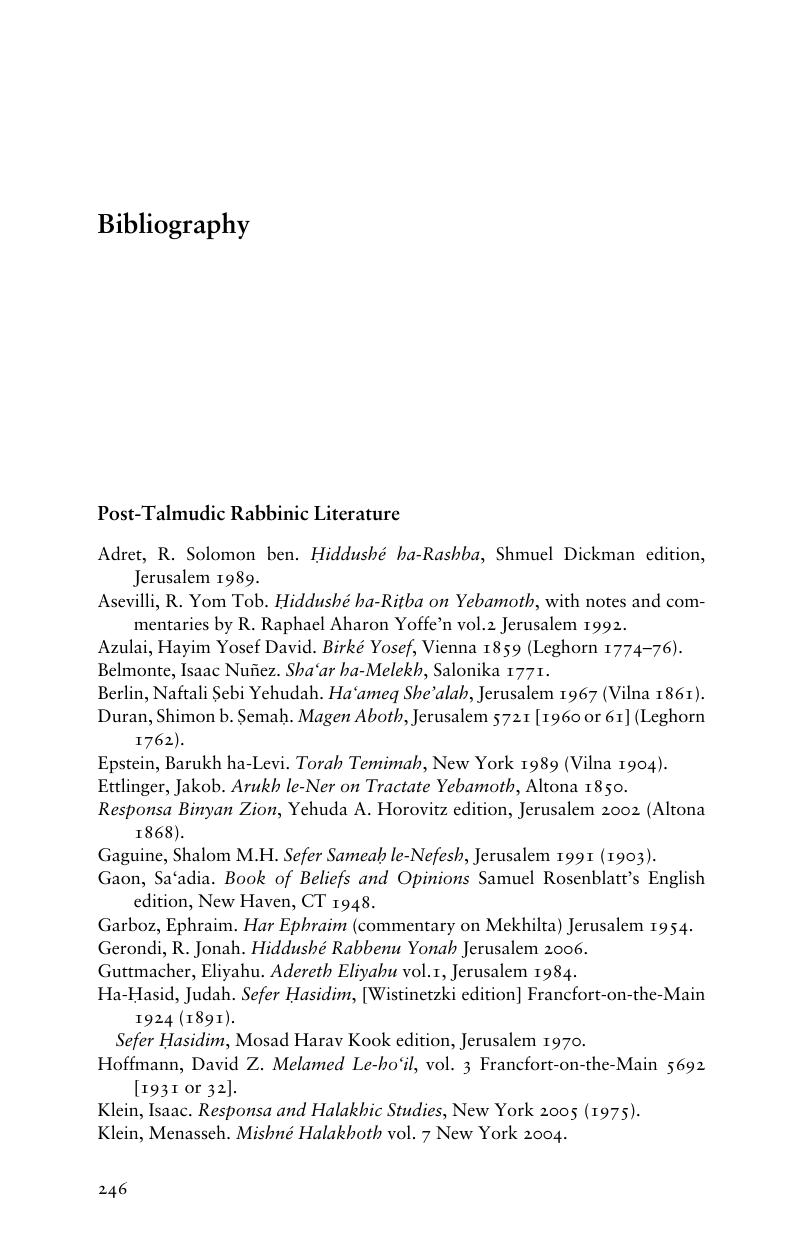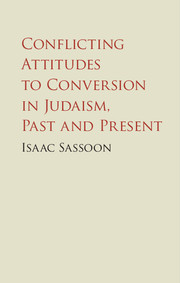Book contents
- Conflicting Attitudes to Conversion in Judaism, Past and Present
- Conflicting Attitudes to Conversion in Judaism, Past and Present
- Copyright page
- Contents
- Acknowledgements
- Glossary
- Abbreviations
- Introduction
- 1 Hillel and Shammai
- 2 Philologizing ‘Ger’
- 3 Metaphoric Blood
- 4 Ethnicity’s Apotheosis
- 5 A Hackneyed Myth
- 6 David’s Sons
- 7 Priesthood
- 8 A Post-Exilic Passover
- 9 Priesthoods Under the Microscope
- 10 Moses the First-Born
- 11 Were Converts a Caste Apart?
- 12 Holiness and Haughtiness
- 13 Seed of Doubt
- 14 Rites of Passage
- 15 A Quirky Blockbuster
- 16 Maimonides
- 17 Warder Cresson
- 18 Canaanites Redux
- 19 Epilogue
- Bibliography
- Hebrew and other Ancient Sources
- Index of Biblical Names (personal and place)
- Index of Names (Tannaim & Amoraim)
- General Index
- References
- Conflicting Attitudes to Conversion in Judaism, Past and Present
- Conflicting Attitudes to Conversion in Judaism, Past and Present
- Copyright page
- Contents
- Acknowledgements
- Glossary
- Abbreviations
- Introduction
- 1 Hillel and Shammai
- 2 Philologizing ‘Ger’
- 3 Metaphoric Blood
- 4 Ethnicity’s Apotheosis
- 5 A Hackneyed Myth
- 6 David’s Sons
- 7 Priesthood
- 8 A Post-Exilic Passover
- 9 Priesthoods Under the Microscope
- 10 Moses the First-Born
- 11 Were Converts a Caste Apart?
- 12 Holiness and Haughtiness
- 13 Seed of Doubt
- 14 Rites of Passage
- 15 A Quirky Blockbuster
- 16 Maimonides
- 17 Warder Cresson
- 18 Canaanites Redux
- 19 Epilogue
- Bibliography
- Hebrew and other Ancient Sources
- Index of Biblical Names (personal and place)
- Index of Names (Tannaim & Amoraim)
- General Index
- References
Summary

- Type
- Chapter
- Information
- Conflicting Attitudes to Conversion in Judaism, Past and Present , pp. 246 - 254Publisher: Cambridge University PressPrint publication year: 2017



